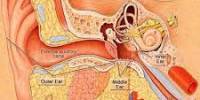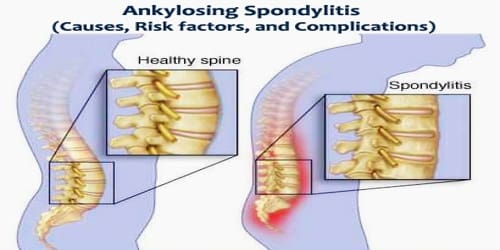You might not think a hospital or medical facility is the best place to catch a bad illness. Yet, every year, about 1.7 million Americans do, leading to close to 100,000 infection-related deaths and almost $30 billion in direct medical costs.
According to specialists, medical equipment like catheters, stents, heart valves, and pacemakers whose surfaces frequently become covered with hazardous bacterial films are the greatest offenders, accounting for two-thirds of these infections.
However, a cutting-edge surface treatment created by a team of scientists led by UCLA may help increase the safety of these devices and lessen the financial strain on the healthcare system.
The brand-new strategy, which has been put to the test in both laboratory and clinical settings, entails depositing a thin coating of so-called zwitterionic material on a device’s surface and then utilizing ultraviolet laser irradiation to permanently bond that layer to the substrate beneath it.
The resulting barrier stops bacteria and other organic substances that could be harmful from sticking to the surface and spreading illness. The research team’s findings were released in the journal Advanced Materials on May 19, 2022.
The resistance of the surface-treated materials to various strains of bacteria, fungus, and proteins was examined after the surface treatment was applied to a number of frequently used medical device materials in the lab. Depending on the microbial strain, they discovered that the treatment decreased biofilm formation by more than 80% and, in some cases, up to 93%.
“The modified surfaces exhibited robust resistance against microorganisms and proteins, which is precisely what we sought to achieve,” said Richard Kaner, UCLA’s Dr. Myung Ki Hong Professor of Materials Innovation and senior author of the research.
“The surfaces greatly reduced or even prevented biofilm formation. And our early clinical results have been outstanding,” Kaner added.
16 long-term urinary catheter users converted to silicone catheters with the new zwitterionic surface treatment for the clinical study. The Food and Drug Administration has approved the use of this modified catheter, which was made by the business Kaner founded in his lab and called SILQ Technologies Corp.
Ten of the patients said the surface-treated catheter made their urinary tract condition “far better” or “very much better,” and 13 of them decided to keep using the novel catheter rather than more traditional latex and silicone choices after the study was over.
The modified surfaces exhibited robust resistance against microorganisms and proteins, which is precisely what we sought to achieve. The surfaces greatly reduced or even prevented biofilm formation. And our early clinical results have been outstanding.
Richard Kaner
“One patient came to UCLA a few weeks ago to thank us for changing her life something that, as a materials scientist, I never thought was possible,” Kaner said. “Her previous catheters would become blocked after four days or so. She was in pain and needed repeated medical procedures to replace them. With our surface treatment, she now comes in every three weeks, and her catheters work perfectly without encrustation or occlusion a common occurrence with her previous ones.”
According to Kaner, a distinguished professor of chemistry and biochemistry, as well as of materials science and engineering at UCLA, these catheter-related urinary tract issues are an example of the problems afflicting other medical devices, which, once inserted or implanted, can become breeding grounds for bacteria and harmful biofilm growth.
These incredibly tough biofilms subsequently feed the body with harmful cells that lead to recurrent infections.
In response, medical personnel regularly provide powerful antibiotics to patients utilizing these devices, a temporary solution that carries a longer-term danger of generating infections that are fatal and antibiotic-resistant, or “superbugs.” According to Kaner, germs are more likely to develop a resistance to antibiotics the more extensively and frequently they are prescribed.
An aggressive response is needed to avoid “a post-antibiotic era in which common infections and minor injuries which have been treatable for decades can once again kill,” according to a landmark 2014 World Health Organization (WHO) report that identified this antibiotic overuse as an impending public health threat.
“The beauty of this technology,” Kaner said, “is that it can prevent or minimize the growth of biofilm without the use of antibiotics. It protects patients using medical devices and therefore protects all of us against microbial resistance and the proliferation of superbugs.”
Zwitterion polymers used in the surface treatment are exceedingly biocompatible and tightly absorb water, providing a thin hydration barrier that keeps bacteria, fungi, and other organic things off of surfaces, Kaner said.
And, he added, the technology is superior to other medical device surface treatments now in use, such as an antibiotic or silver-infused coatings, in terms of effectiveness, safety, and cost.
According to Kaner, the surface treatment method may also be used in non-medical settings, possibly prolonging the lifespan of water-treatment equipment and enhancing lithium-ion battery performance.
The National Institutes of Health, the National Science Foundation, the Canadian Institutes of Health Research, SILQ Technologies Corp., and the UCLA Sustainability Grand Challenge provided financial support for the study.
Co-lead authors of the study are Brian McVerry, Alex Polasko, and Ethan Rao. McVerry helped develop this and other surface treatments during his UCLA doctoral research with Kaner and co-founded SILQ Technologies Corp., where is he now chief technology officer. Rao, director of research and development at SILQ, and study co-author Na He, a process engineer at SILQ, have conducted UCLA research in Kaner’s laboratory.
Other co-authors are the UCLA Samueli School of Engineering’s Shaily Mahendra, a professor of civil and environmental engineering, and Dino Di Carlo, a professor of bioengineering and of mechanical and aerospace engineering; Amir Sheikhi, an assistant professor of chemical and biomedical engineering at Penn State University; and Ali Khademhosseini, CEO of the Terasaki Institute for Biomedical Innovation and formerly a professor of bioengineering, chemical, and biomolecular engineering, and radiological sciences at UCLA.
















